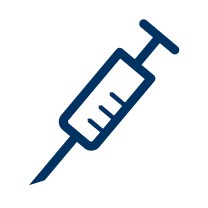Allergy immunotherapy (AIT) the only causal treatment for allergic rhinitis
Immunotherapy works by stimulating the patient’s immune system so that it learns not to react to specific allergens. Over time, it modifies the allergy, offering long-term benefits including less symptoms, a lower need for symptom relieving medication and may lower the risk of developing asthma.
During treatment, the patient is given repeated doses of an allergen, either as injections or as drops or tablets under the tongue. Through this repeated exposure, the body’s immune system gradually builds up a tolerance for the allergen, resulting in fewer symptoms when met with the allergen in the environment.
Controlling the body’s allergic response
In biological terms, what allergy immunotherapy encourages is known as immune deviation and immune tolerance.
Immune deviation is a process where the immune cells responsible for the allergic immune response are replaced by other immune cells which do not react in the same way. Meanwhile, immune tolerance – the body’s ability to tolerate allergens without reacting – is induced by ‘regulatory immune cells’, which dial down the body’s allergic response. Together, these processes result in the production of IgE-blocking antibodies, which partly neutralise the allergic immune response.
A unique benefit of allergy immunotherapy is that it can modify the patient’s allergic disease – something that does not happen with symptom-relieving medications.
Not only can allergy immunotherapy bring about a rapid reduction in symptoms and reduced use of symptom-relieving medication, its benefits can also continue long after the end of treatment through a sustained reduction in the need for symptomatic medication and a lower risk of developing asthma symptoms.
Allergy immunotherapy are produced from living cells rather than being synthesised by chemists
Allergy immunotherapy treatments are classified as biologics, because they are produced from living cells rather than being synthesised by chemists. ALK’s allergy immunotherapy products are derived from natural allergen sources such as grass pollen, tree pollen and house dust mites and come in three forms:

Injections
Subcutaneous allergy immunotherapy (SCIT) is allergy immunotherapy given as regular injections under the skin. The treatment is administered by a doctor.
 Sublingual drops
Sublingual drops
Sublingual allergy immunotherapy (SLIT) drops are administered under the tongue. Patients administer the drops themselves at home, avoiding the need for regular visits to the doctor.
 Tablets
Tablets
SLIT-tablets are administered by the patient at home (after the first dose is tolerated under medical supervision (30 min)) and are the most-documented AIT treatment. Tablets for house dust mite, grass, tree (birch family) and ragweed are already available in many markets and tablets for Japanese cedar allergy are currently available in Japan.



